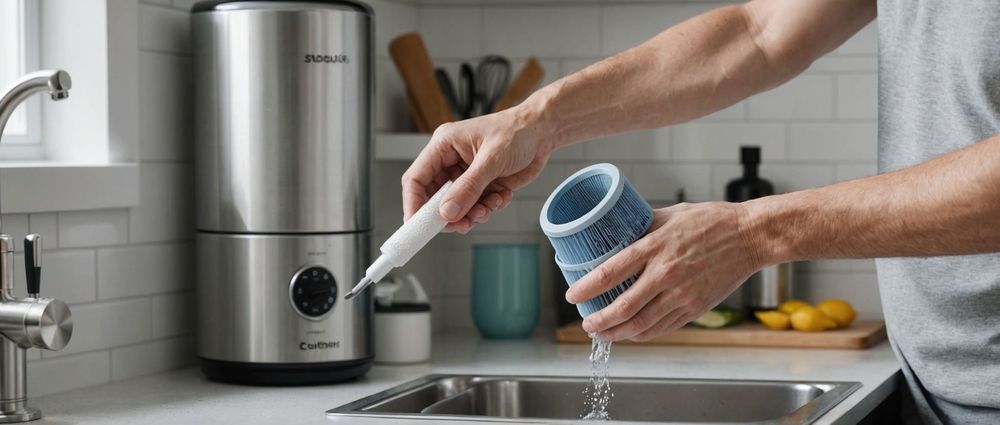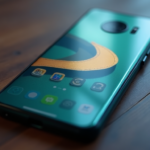Water purifiers play a crucial role in ensuring that the water you consume is safe and clean. However, the effectiveness of these appliances depends on how well you use and maintain them. This article will outline the essential dos and don’ts of using a water purifier to help you maximize its benefits and ensure the safety of your drinking water.
Do: Follow Manufacturer Guidelines

When it comes to operating a water purifier, adhering to the manufacturer’s instructions is paramount. These guidelines are designed to ensure that the purifier functions at optimal levels, providing you with the cleanest water possible. Here are some critical aspects to consider:
- Read the user manual thoroughly before installation and use.
- Understand the maintenance schedule recommended by the manufacturer.
- Use only the replacement filters and parts specified for your model.
- Be aware of any warranties or guarantees offered.
- Contact customer service for any operational issues rather than attempting repairs.
Don’t: Neglect Regular Maintenance

Neglecting the maintenance of your water purifier can significantly hamper its ability to filter contaminants effectively. Regular upkeep is essential to ensure clean drinking water. Here are some maintenance tips:
- Change the filters as recommended—usually every 6 to 12 months.
- Clean the exterior and interior surfaces with appropriate cleaning agents.
- Check for leaks or damages regularly to avoid malfunctions.
- Sanitize the water reservoir as suggested by the manufacturer.
- Inspect the tubing and connections for any wear and tear.
Do: Monitor Water Quality
Even with a water purifier, it’s crucial to regularly check the quality of the water it produces. This not only ensures that the purifier is functioning correctly but also that you’re aware of any changes in water quality that might indicate issues. Here’s how to monitor quality:
- Use test kits that can detect common contaminants.
- Pay attention to any changes in taste, color, or smell of the water.
- Keep track of water quality reports from local water authorities.
- Consider professional water testing if you suspect contamination.
- Reassess the need for a more advanced filtration system if issues persist.
Don’t: Use Contaminated Water Sources
Using a water purifier does not mean you can use any available water source. Some water sources are heavily contaminated and may exceed the purifier’s capabilities. It’s best to avoid:
- Using water from stagnant ponds or lakes.
- Harvesting rainwater without proper filtration and treatment.
- Using untreated well water without prior testing.
- Consuming water from unknown or suspicious sources.
- Ignoring any advisories on water quality from local health departments.
Do: Educate Yourself About Your Purifier
Understanding the technology behind your water purifier will help you appreciate its capabilities and limitations better. Whether you own a reverse osmosis system, UV purifier, or carbon filter, knowing its mechanisms can guide you in using it effectively:
- Research the filtration methods employed by your purifier.
- Understand what contaminants your purifier can effectively remove.
- Know the lifespan of each filter type used in your system.
- Learn the signs that indicate when the filter needs replacement.
- Stay updated on any improvements or upgrades related to your model.
Conclusion
Using a water purifier wisely can greatly enhance your health by providing safe and clean drinking water. By following the dos and avoiding the don’ts outlined above, you can ensure that your water purifier operates efficiently and effectively. Regular maintenance, awareness of water quality, and adherence to manufacturer guidelines are key steps in this process. Make informed decisions about your water source, and you’ll enjoy the benefits of purified water for years to come.
FAQs
1. How often should I replace the filter in my water purifier?
The frequency of filter replacement typically ranges from every 6 months to every year, depending on usage and the manufacturer’s recommendations. Always refer to the user manual for specific guidelines.
2. Can I use any water source with my purifier?
Not all water sources are suitable for purifiers. Avoid using heavily contaminated water from stagnant sources or untreated wells. Always check the water’s quality before use.
3. What are some signs that my water purifier needs maintenance?
Signs include a noticeable change in water taste or odor, a drop in water flow, or warning lights on the unit indicating issues. Regular checks can help catch problems before they escalate.
4. How can I tell if my water purifier is effective?
You can monitor its effectiveness by testing the water quality with kits designed to detect contaminants that the purifier is supposed to eliminate. Regular checks can give you confidence in your water’s purity.
5. Is it safe to drink water from my purifier if the power goes out?
If power is lost, your purifier may not work; if it’s a gravity filter, it may still operate without power. However, it’s best to have a backup plan for clean drinking water in emergencies.


